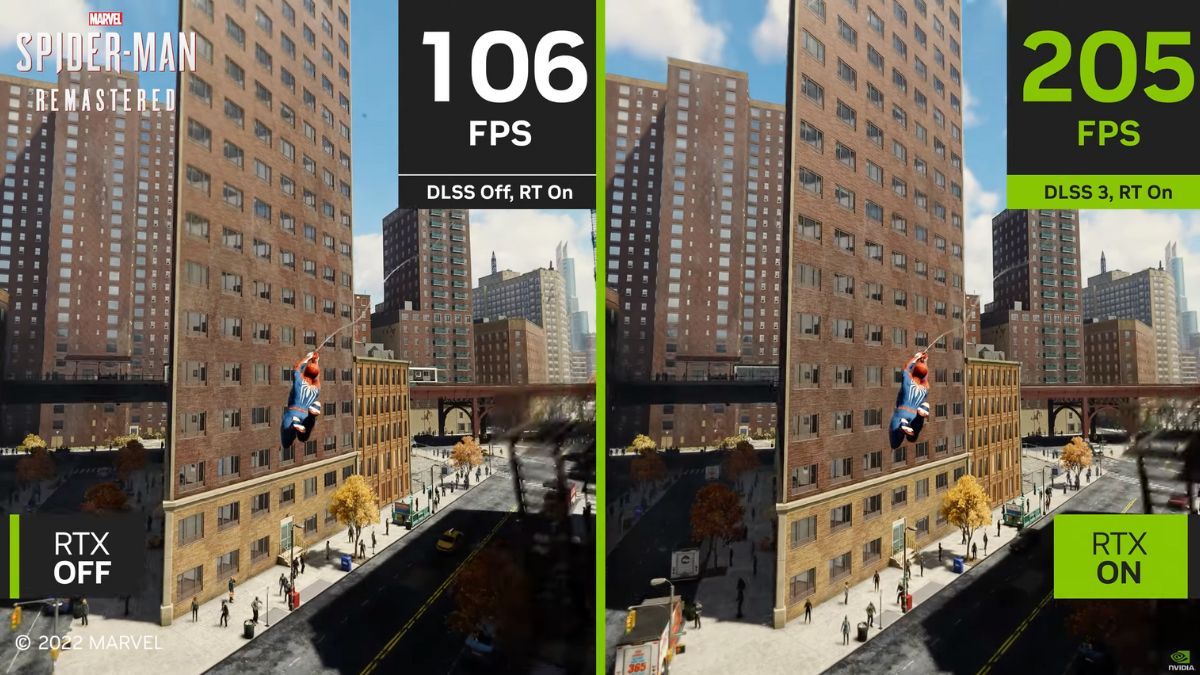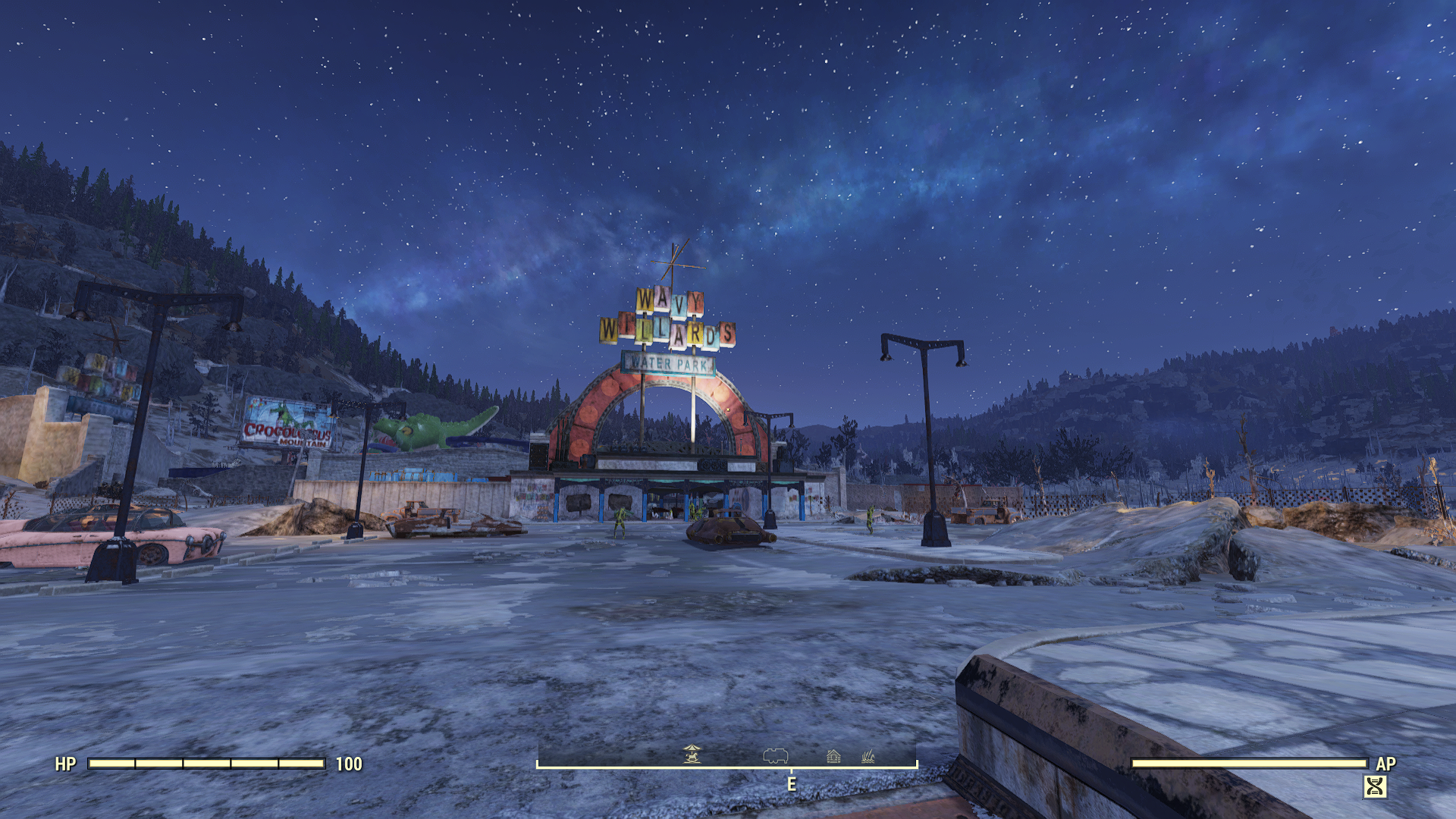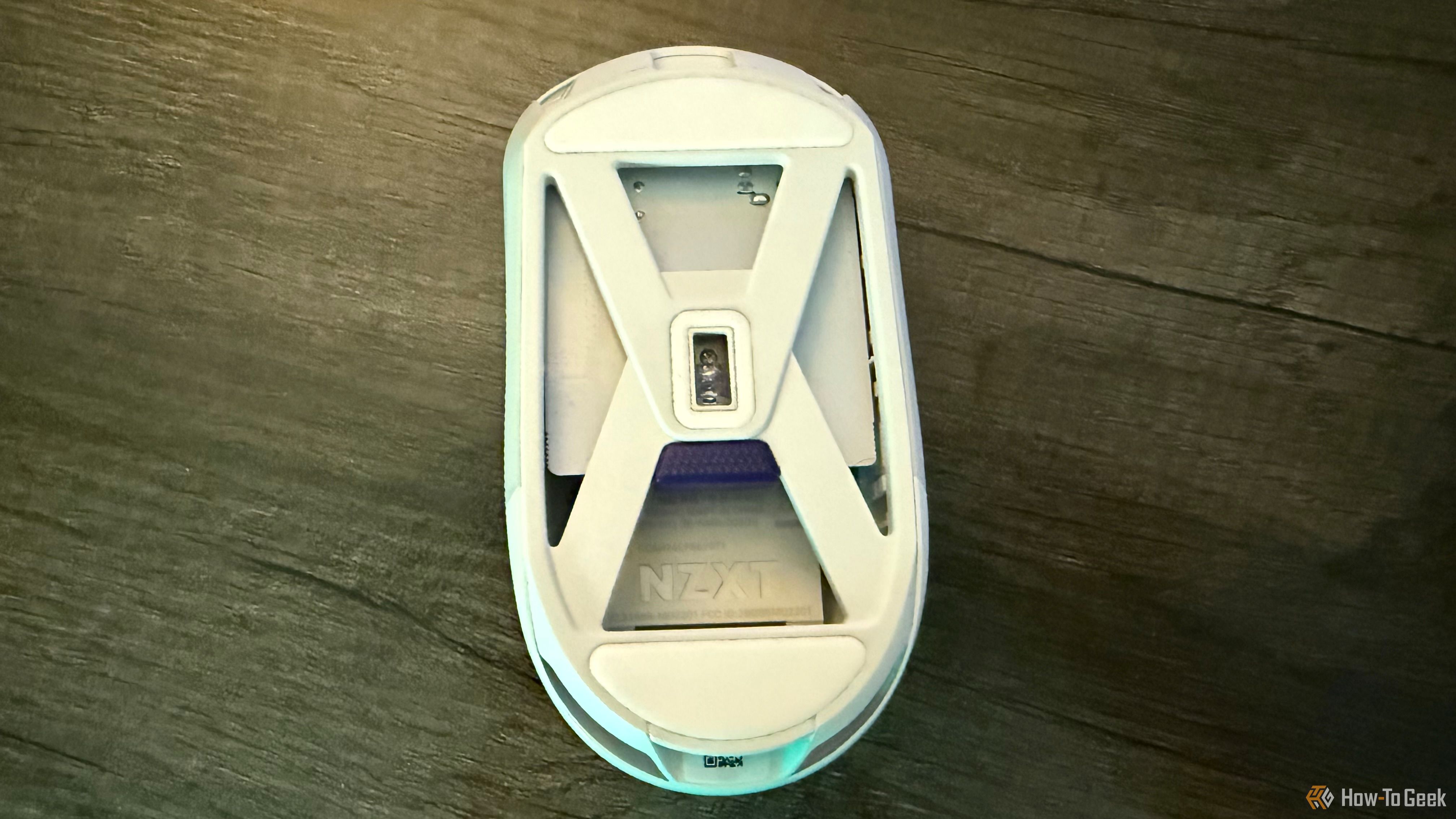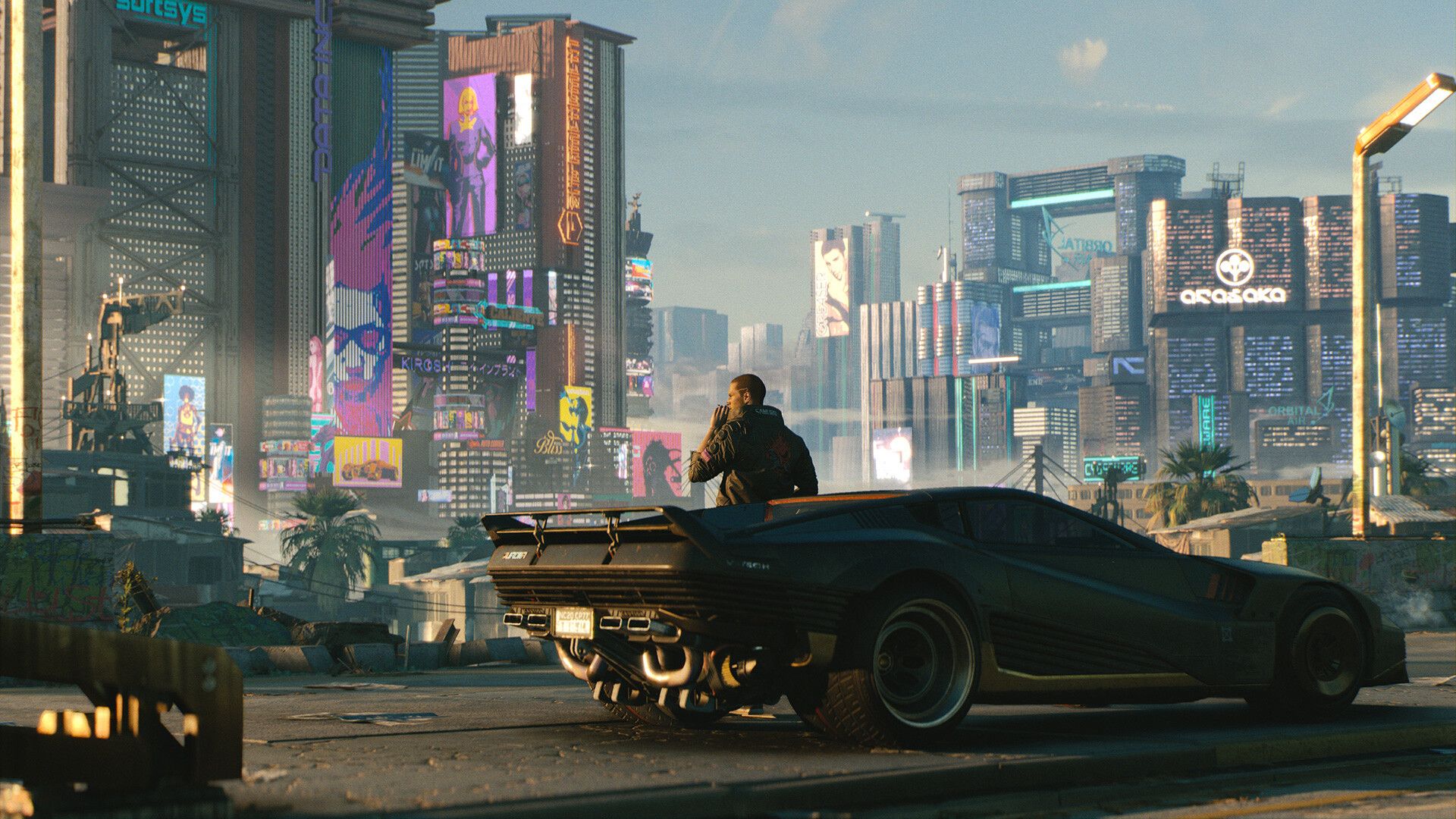Summary
- High-quality source frames are essential for frame generation to produce convincing results.
- Frame generation performs best at high frame rates (60+), offering more noticeable improvements when the baseline frame rate is already strong.
- The technology can still help weak GPUs run games better than they would otherwise.
NVIDIA claims that the RTX 5070 can match the RTX 4090 in terms of performance once frame generation is enabled. However, the reality is that not much has changed. If you want top-tier performance, you’ll still need to pay top-dollar.
Frame Generation Needs a Good Baseline
To explain why frame generation isn’t some magical solution that can make an old mid-range graphics card run the latest games, let’s break down how frame generation works. In a nutshell, a frame generation algorithm takes two real frames that your GPU renders and interpolates an additional frame between the two. It predicts (usually with the help of AI) where each pixel should go to make the transition smoother.
The quality of the generated frame depends on the quality of the original render. If the source frames are high-quality and free of artifacts, the generated frame will also appear more convincing.
More importantly, the number of real frames directly impacts how many extra frames can be generated and how much information they can contain, as frame generation roughly doubles your FPS. If you’re running a game at only 15 or 20 FPS, there’s limited visual data for the frame generation algorithm to work with. However, doubling 120 FPS to 240 is a whole other story. The algorithm has plenty of data to produce a smooth result.
The frame generation algorithm matters, too—not all frame generation technologies work in the same way. For instance, the NVIDIA RTX 40-Series employs a hardware-level Optical Flow Accelerator (OFA) to power DLSS, whereas AMD’s AFMF 2 relies on a driver-level AI-enhanced algorithm instead.
To even gain access to advanced frame generation features, you need a newer graphics card, which is somewhat counterintuitive. For example, DLSS 4 integrated Multi-Frame Generation (MFG) into the DLSS suite, but it’s only available on the new RTX 50-Series.
If I had an RTX 50-Series GPU, I’d likely have enough raw power to run any game at a decent FPS, so I wouldn’t need MFG and frame generation as much as someone with an RTX 20-Series card. Still, it’s always great to see technology evolve. Plus, it could have an impact on future game titles.
AI-Generated Frames Don’t Feel Like Real Frames
Fallout 76 with AFMF 2 enabled
In my experience, frame generation doesn’t always feel right, particularly in fast-paced games. Admittedly, my experience is limited to AMD’s solutions, but from what I’ve read and heard, NVIDIA’s solution is only slightly better despite its more sophisticated algorithms.
What I’m trying to say is that doubling my FPS from 60 to 120 with frame generation feels closer to 80 FPS, even though the FPS counter in the corner says otherwise. After upgrading to a better PC recently, I can tell you firsthand that the difference between real and generated 120+ FPS is stark.
The most likely reason for this is due to how frame generation algorithms work. Since they predict where each pixel should be, they sometimes introduce errors, leading to lower-quality frames and noticeable artifacts.
Frame generation especially struggles with quick movements. For example, when I quickly look around in Starfield, I’ve noticed that frame generation makes the crosshair almost disappear (among other artifacts). Frame generation also doesn’t handle sudden frame drops well, as it can sometimes lead to irregular frame pacing. This reinforces my point—you need good hardware and stable FPS to get the most out of frame generation.
Limitations of AI-Generated Frames
Now that we’ve established that frame generation only works well if you already have solid FPS, let’s talk about some inherent limitations that current versions of frame generation have. One of the big ones is input lag—the delay between your input (key press) and the screen displaying it.
Frame generation adds input lag. While it can be somewhat mitigated with the help of NVIDIA Reflex 2 and AMD Anti-Lag, it’s not enough. As demonstrated in this YouTube video by Mostly Positive Reviews, frame generation can add anywhere from 30ms to 80ms of latency, roughly doubling the average delay compared to gameplay without frame generation. Additionally, these latency-reducing technologies aren’t exclusive to frame generation, meaning you can use them independently to achieve the lowest input lag possible.
While this amount of latency isn’t particularly noticeable in a casual racing game like Forza Horizon 5 when using a controller via Bluetooth, it becomes much more apparent in competitive shooters like Marvel Rivals, especially on a 240Hz display and a gaming mouse that has an 8kHz polling rate.
It’s ironic, really—you want the highest FPS possible in competitive games, but frame generation is off the table because the increased input lag negates the benefits of those higher frame rates. Not that you would want the frames, anyway, as they’re usually too smudgy for competitive gaming.
I’m Still Excited About AI-Generated Frames
After everything I’ve said, you might be thinking that I hate frame generation. However, that’s not entirely true. On the contrary, I find that it works quite well in certain games where fast-paced camera movements aren’t a factor—such as racing games, adventure games, and many third-person RPGs.
The issue is that frame generation can’t serve as a crutch if your graphics card isn’t powerful enough. While it can boost performance a bit by doubling your frames, that FPS counter is misleading. If your GPU is barely managing 30 FPS, don’t expect frame generation to transform the experience into a silky-smooth 60 FPS.
Moreover, if you’re on a weaker GPU, it’s likely that the rest of the system is equally underpowered and struggles with modern titles as well. At the very least, it can help you push your FPS into your monitor’s FreeSync range for a smoother experience.
In the same vein, you can’t expect to have the same level of performance as, say, RTX 3070 with an RTX 4060 plus frame generation. The older RTX 3070 is the more powerful card, even if it doesn’t support DLSS Frame Generation.
Frame generation can work well, but you already need to have a graphics card that can push solid FPS. I find that even 60 FPS no longer feels smooth enough, so I can use frame generation to double my frame rate to 120 FPS and take full advantage of my high refresh rate display.
Still, it’s nice to see weaker cards getting an extended usable lifespan with the help of frame generation. I wish I had frame generation and upscaling when I was stuck at 25 FPS in games like Assassin’s Creed IV: Black Flag twelve years ago.









